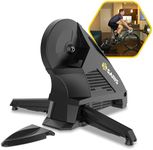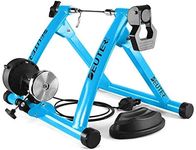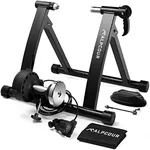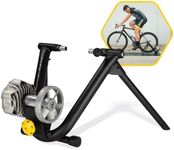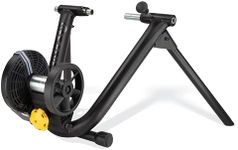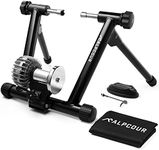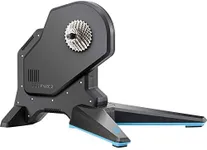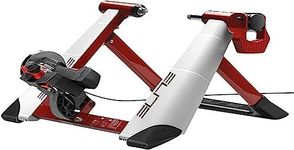Buying Guide for the Best Indoor Bike Trainer
Choosing the right indoor bike trainer can significantly enhance your cycling experience, especially when outdoor riding isn't an option. The right trainer will help you maintain your fitness, improve your cycling skills, and provide a realistic riding experience. To make an informed decision, it's important to understand the key specifications and how they align with your needs and preferences.Type of TrainerThere are several types of indoor bike trainers, including wheel-on trainers, direct-drive trainers, and smart trainers. Wheel-on trainers are generally more affordable and easier to set up, making them suitable for beginners. Direct-drive trainers offer a more realistic riding experience and are quieter, which is ideal for serious cyclists. Smart trainers can connect to apps and provide interactive training sessions, perfect for tech-savvy users who want a more engaging workout. Consider your level of experience and what you want to achieve with your training when choosing the type.
Resistance MechanismThe resistance mechanism determines how the trainer simulates the feel of riding on the road. There are fluid, magnetic, and electromagnetic resistance trainers. Fluid trainers offer a smooth and progressive resistance, which feels more natural and is great for a realistic ride. Magnetic trainers are quieter and allow for adjustable resistance levels, making them versatile for different training intensities. Electromagnetic trainers are often found in smart trainers and provide precise control over resistance, ideal for structured training programs. Your choice should depend on how realistic and adjustable you want your training sessions to be.
Noise LevelNoise level is an important consideration, especially if you live in an apartment or have housemates. Fluid trainers tend to be quieter, while magnetic trainers can be a bit noisier. Direct-drive trainers are generally the quietest option, making them suitable for shared living spaces. If noise is a concern, look for trainers specifically designed to operate quietly. Think about where you'll be using the trainer and how much noise you can tolerate.
CompatibilityCompatibility refers to whether the trainer can accommodate your bike's wheel size and axle type. Most trainers are compatible with a range of wheel sizes, but it's important to check the specifications to ensure a proper fit. Some trainers also require specific adapters for different axle types. Make sure to verify that the trainer you choose is compatible with your bike to avoid any issues during setup.
ConnectivityConnectivity is crucial if you want to use training apps like Zwift or TrainerRoad. Smart trainers can connect to these apps via Bluetooth or ANT+, providing a more interactive and engaging training experience. If you prefer structured workouts and virtual rides, a trainer with good connectivity options is essential. Consider how important it is for you to have access to these features and choose a trainer that supports the necessary connections.
Portability and StoragePortability and storage are important if you have limited space or plan to move the trainer frequently. Some trainers are foldable and lightweight, making them easy to store and transport. Others are more robust and may require a dedicated space. Think about where you'll be using the trainer and how much space you have available. If you need to store it away after each use, look for a model that is easy to fold and carry.
StabilityStability ensures that the trainer remains steady during intense workouts. A stable trainer will have a wide base and sturdy construction, preventing it from tipping over or wobbling. This is especially important for high-intensity interval training or sprinting. If you plan to do vigorous workouts, prioritize stability to ensure a safe and effective training session.



